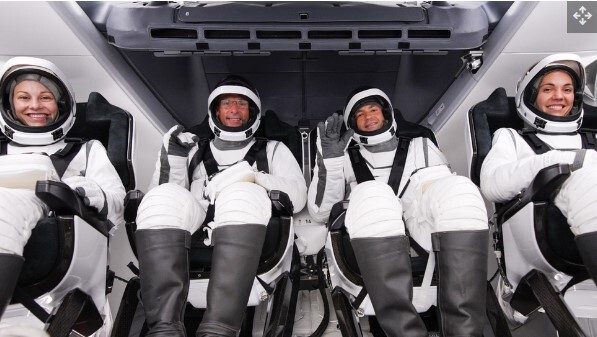A SpaceX Crew Dragon(a.k.a. Resilience) lifted off atop a SpaceX Falcon 9 rocket on Tuesday(Sept. 10) at 0923 UTC from historic Launch Complex-39A at NASA's Kennedy Space Center (KSC). Aboard the spacecraft are Polaris Dawn mission astronauts headed to about 1,400 kilometers away from Earth, higher than any human has flown since the final Apollo mission in 1972.
Approximately 9.5 minutes after liftoff, the Falcon 9 first stage returned to Earth as expected, landing on SpaceX autonomous droneship Just Read the Instructions(JRTI), stationed off Florida's eastern coast in the Atlantic Ocean. Crew Dragon meanwhile, separated from the Falcon 9's upper stage a little over 12 minutes after liftoff.
"We wouldn't be on this journey without all 14,000 of you back home and everyone else cheering us on," billionaire entrepreneur Jared Isaacman, who commands and funds Polaris Dawn, told SpaceX mission control shortly after Resilience deployed into orbit. "We appreciate it. We're gonna get to work now." Joining him aboard are the first two SpaceX employees to launch to orbit, mission specialists Sarah Gillis and Anna Menon, as well as retired U.S. Air Force Lt. Col. Scott "Kidd" Poteet, who serves as mission pilot.
Polaris Dawn program X account also posted a note signed the 4 astronauts.
Resilience settled into an initial elliptical orbit with a maximum altitude (apogee) of about 1,200 km, with the minimum altitude (perigee) holding at about 190 km. Then after a few orbits, the capsule will raise its apogee to about 1,400 km.
Isaacman, who has been to space once before, and his crewmates will spend the next five days in space, completing a wide variety of tests and experiments in the novel space environment that the mission is exploring.
After Polaris Dawn's second day in space, Crew Dragon will lower its apogee to about 700 km, at which altitude the crewmembers will conduct the most critical part of their mission: history's first commercial spacewalk. This is also the altitude where the Dragon will remain until its deorbit burn and return to Earth.
The EVA (extravehicular activity) will take place on the third day of the mission when a SpaceX's new EVA spacesuit, which is visually similar to the company's familiar black-and-white IVA (intravehicular activity) suit, will be tested. Crew Dragon doesn't have an airlock, so the capsule's entire interior will be exposed to the vacuum of space during the EVA. All four crewmembers will therefore suit up during the spacewalk, though only Isaacman and Gillis will venture outside the spacecraft.
Isaacman and Gillis will take turns exiting Crew Dragon to test the functionality and maneuverability of their suits. In total, the Polaris Dawn EVA will last about two hours from the start of Crew Dragon's depressurization until the hatch is closed and the cabin repressurized.
The mission's fourth day includes a Starlink demonstration; the Polaris Dawn crew has teased an exciting surprise message they intend to transmit down to Earth via SpaceX's megaconstellation of internet satellites.
Polaris Dawn crew will also conduct about 40 science experiments during the mission. "Aboard commercial mission Polaris Dawn are @NASA studies that test telemedicine tech, gather data on space-related motion sickness, & better assess crews’ injury risk upon landing," NASA wrote on X.
The crew will spend day five preparing for the return journey home. Resilience is expected to splash down six days after liftoff, off the coast of Florida where a recovery ship will retrieve the spacecraft and crew.
Polaris Dawn was originally scheduled to launch on Aug. 26, but SpaceX stood down from that attempt to perform more preflight checks. Another try the following day was called off after the mission team detected a helium leak in the equipment supporting the Falcon 9. The liftoff was then delayed multiple times by bad weather, before Tuesday's successful launch















